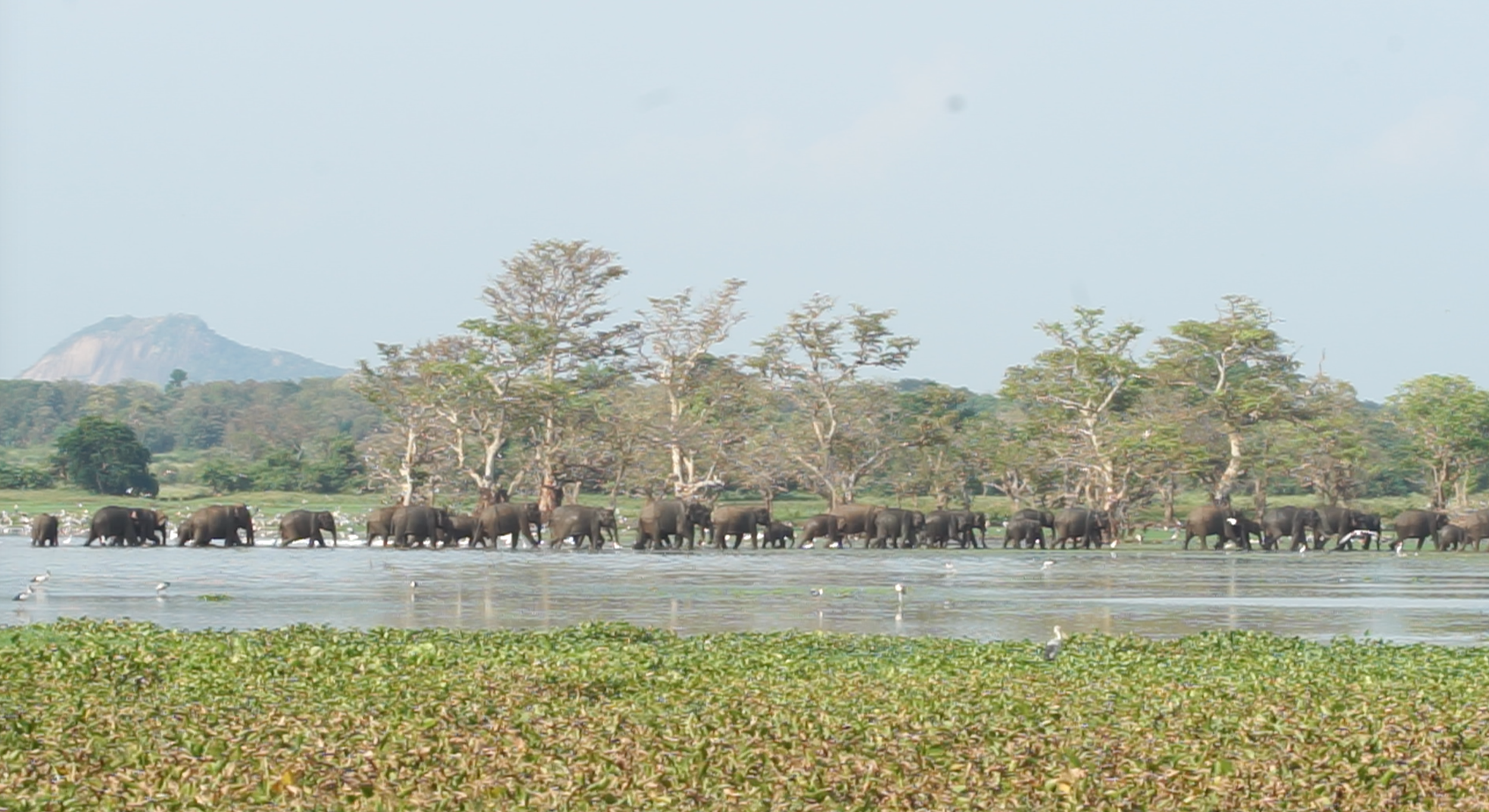The Great elephant gathering of asia
The End of "The Great Elephant Gathering" of Sri Lanka.
We interviewed Dr. Sumith Pilapitiya, former Director General of Sri Lanka's Wildlife Conservation, about Minneriya Reservoir. Ever since its construction by King Mahasena in 300 AD, this reservoir's "recessional grasses" have provided dry-season forage for up to 500 elephants. It's become one of the greatest wildlife spectacles of the world, yet in only the span of a few years, the Rajapaksa and Serisena administrations have ended two millennia of Sri Lanka's natural heritage.
Lonely Planet called the Great Elephant Gathering of Sri Lanka one of the "Ten Natural Wonders of the World." We have feared that the new Moragahakanda dam and its irrigation scheme would stop the Great Gathering. We were right. By keeping the reservoirs' water at a year-round high and near full level, the grasses are submerged and not available during the critical dry season.
Dr. Sumith has counted only 78 elephants at The Gathering this season -- where have the other 400 elephants gone? Those elephants have become scattered and in search of forage and are now raiding farmers fields in the night. This year is seeing a record number of human-caused elephant deaths - more than one per day. It is safe to say that the elephants that were displaced from Minneriya are increasing the incidence of human/elephant conflict and are dying.
The economic impact to the 600 jeep safari operators and multitude of hotels that rely on the Great Gathering's tourism is a disaster yet to unfold.
We must insist that the Rajapaksa administration reverse course and swiftly restore Minneriya to its former glory. It's only a matter of a a simple signature to do so.
In summary:
> Minneriya National Park (MNP) has been the site for the “Great Elephant Gathering”, which has gained an international reputation as “one of the 10 greatest wildlife wonders of the world”, after being ranked as such by Lonely Planet
> Although the popular myth is that elephants return to Minneriya during the dry season for water, the scientific reason is that the elephants return for the lush grasses of the lakebed.
> Fresh grass is higher in protein than mature grass, thus is the main attractant for elephants to Minneriya.
> Since the construction of the Moragahakanda reservoir in 2018, there have been unseasonal water releases into the Minneriya reservoir during the dry season that have resulted in fluctuating water levels in the reservoir.
> Associated with the fluctuation of water levels of the Minneriya reservoir is a reduction of the elephant population in Minneriya.
> Unseasonal water releases have been observed during the dry seasons of 2018, 2019, 2020 and 2021 (still in progress).
> The irrigation authorities responsible for water releases into and out of the Minneriya reservoir appear to be filling the Minneriya reservoir up to 70-85 MCM 1 (or 70% of reservoir capacity), which is the water level needed in Minneriya to “spill” water to the Yoda Ela for onward transmission to reservoirs in the north east.
> It has been observed since 2018, when unseasonal water releases are made to Minneriya, even the slightest increase in the water level triggers the unexplained movement of several herds of elephants out of Minneriya, regardless of the available grasslands.
> Observation of the elephant numbers during the peak of the “elephant gathering” during the month of September, reveals an alarming decrease of elephants during the peak of The Gathering
> There is approximately a 50% reduction of elephants of the gathering since 2018. In 2021 only 78 elephants were observed at the peak of the season, instead of the 400+ figure which was the standard observation prior to the Moragahakanda project
> It is increasingly apparent that we are gradually losing the “Great Elephant Gathering” in Minneriya
> It has also been observed that the human elephant conflict in the surrounding areas has increased 6 fold along with the decreasing numbers of elephants at Minneriya
> Total economic worth of The Gathering was estimated to be well over ~ Rs. 4 billion or US$ 22 million, in 2018 + thousands of jobs created (Jeep Drivers at Minneriya & Kaudulla, Hotels & Restaurants)
> No agricultural project irrigated with water from Minneriya, during the dry season, will contribute to even 1% of the present economic value of ‘The Gathering’.
> The impact of the unsustainable irrigation plans of the Moragahakanda project, is killing the local economy, local livelihoods, worsening the human-elephant conflict in the area and as a result killing our elephants and taking away human lives too.
#ProtectTheGathering #ProtectOurElephants #ProtectSriLanka
WWF Wildlife and Nature Protection Society of Sri Lanka Sri Lanka Tourism Development Authority DWC අපේ පිටුව / DWC Our Page Elephant Aid International International Elephant Foundation Ada Derana Asian Elephant Support BBC News සිංහල BBC news � Al Jazeera English Reuters ABC News SBS News Animal Defenders International United for Wildlife Asian Wild Aid Foundation - AWAF Wildlife Conservation Society Australian Conservation Foundation Wildlife Alliance Asian Geographic Wildlife Conservation Film Festival Wildlife SOS National Wildlife Federation Voice for Asian Elephants Society Rainforest Trust Wild Heart Wildlife Foundation Defenders of Wildlife Sobadhara - Sri Lanka Wildlife Documentary Environmental Investigation Agency Conservation International

